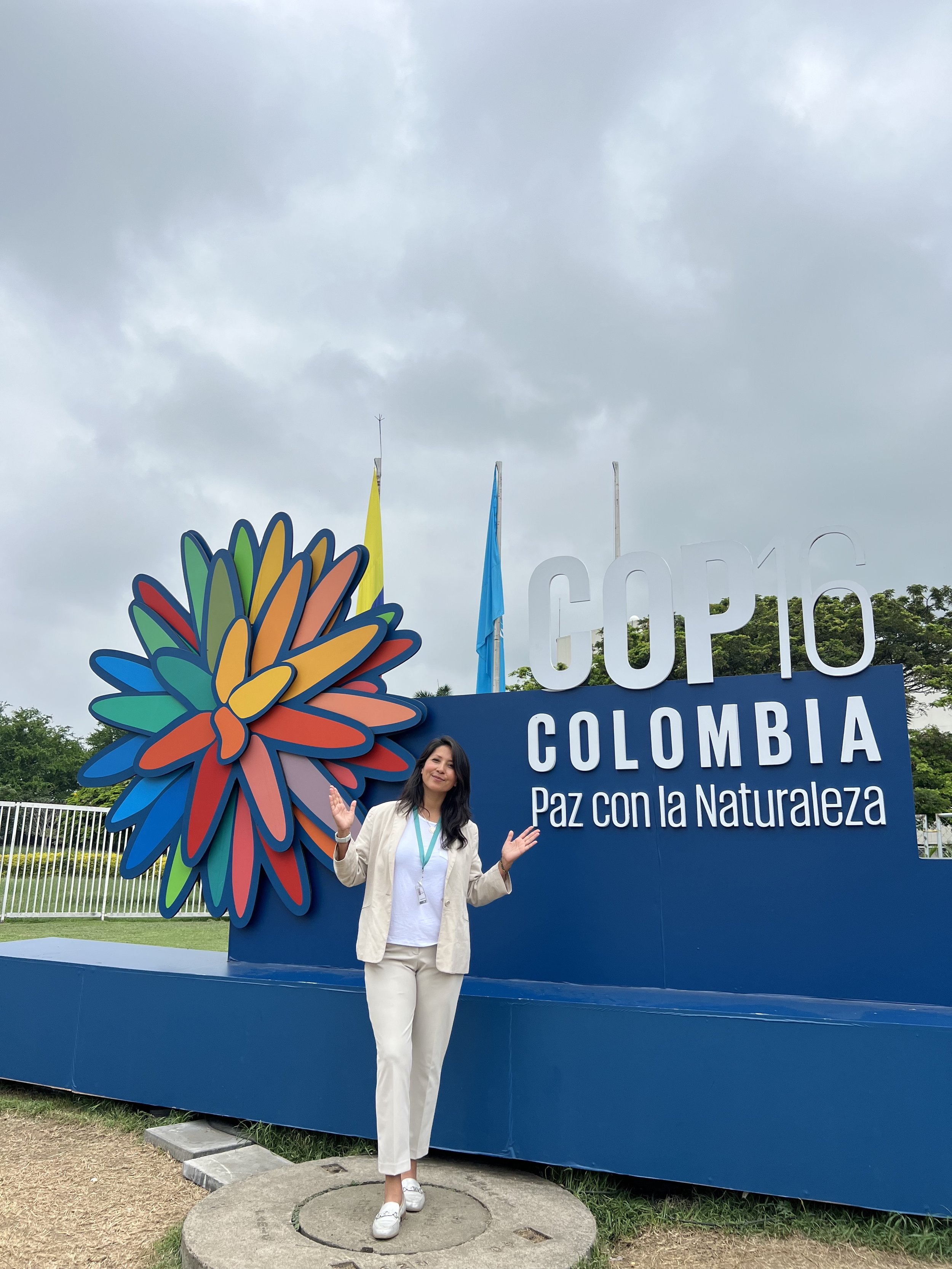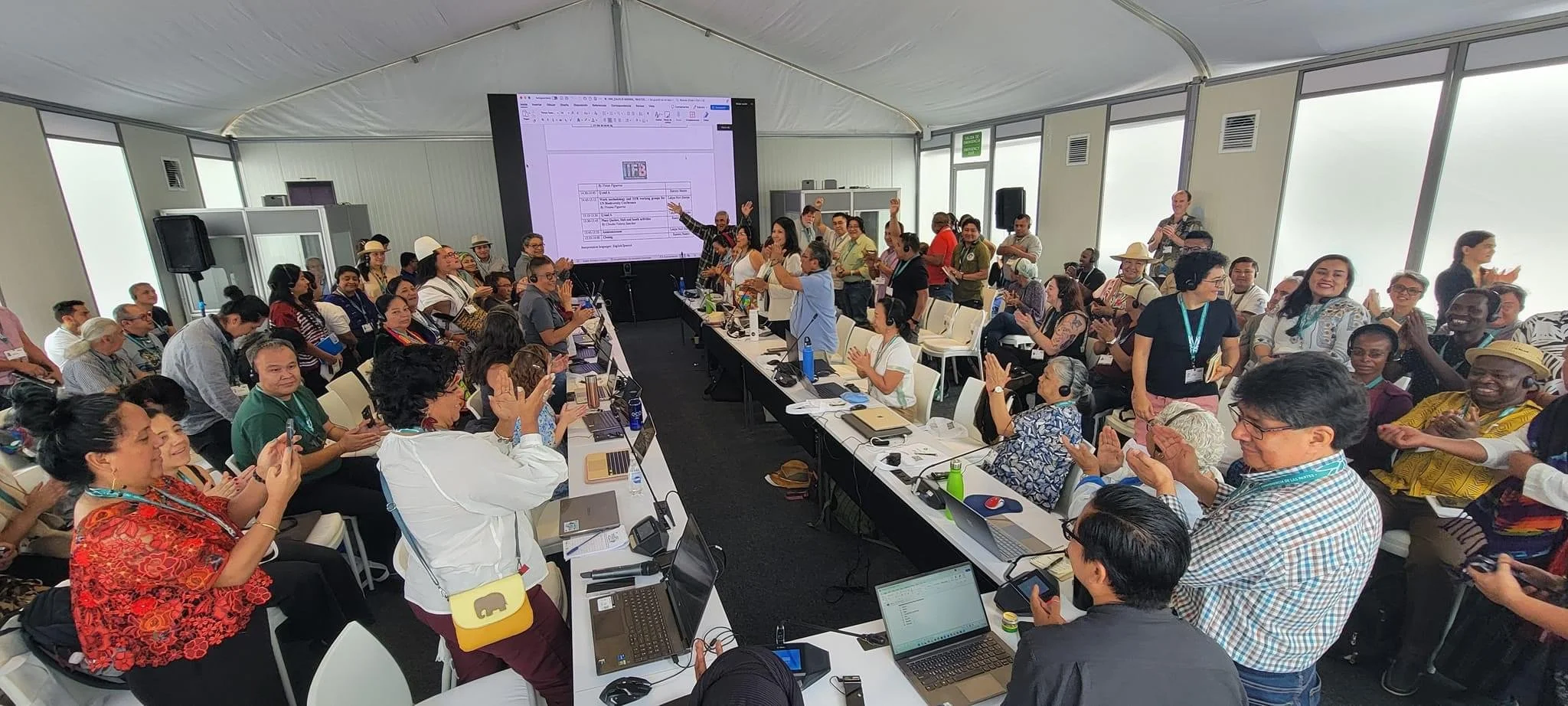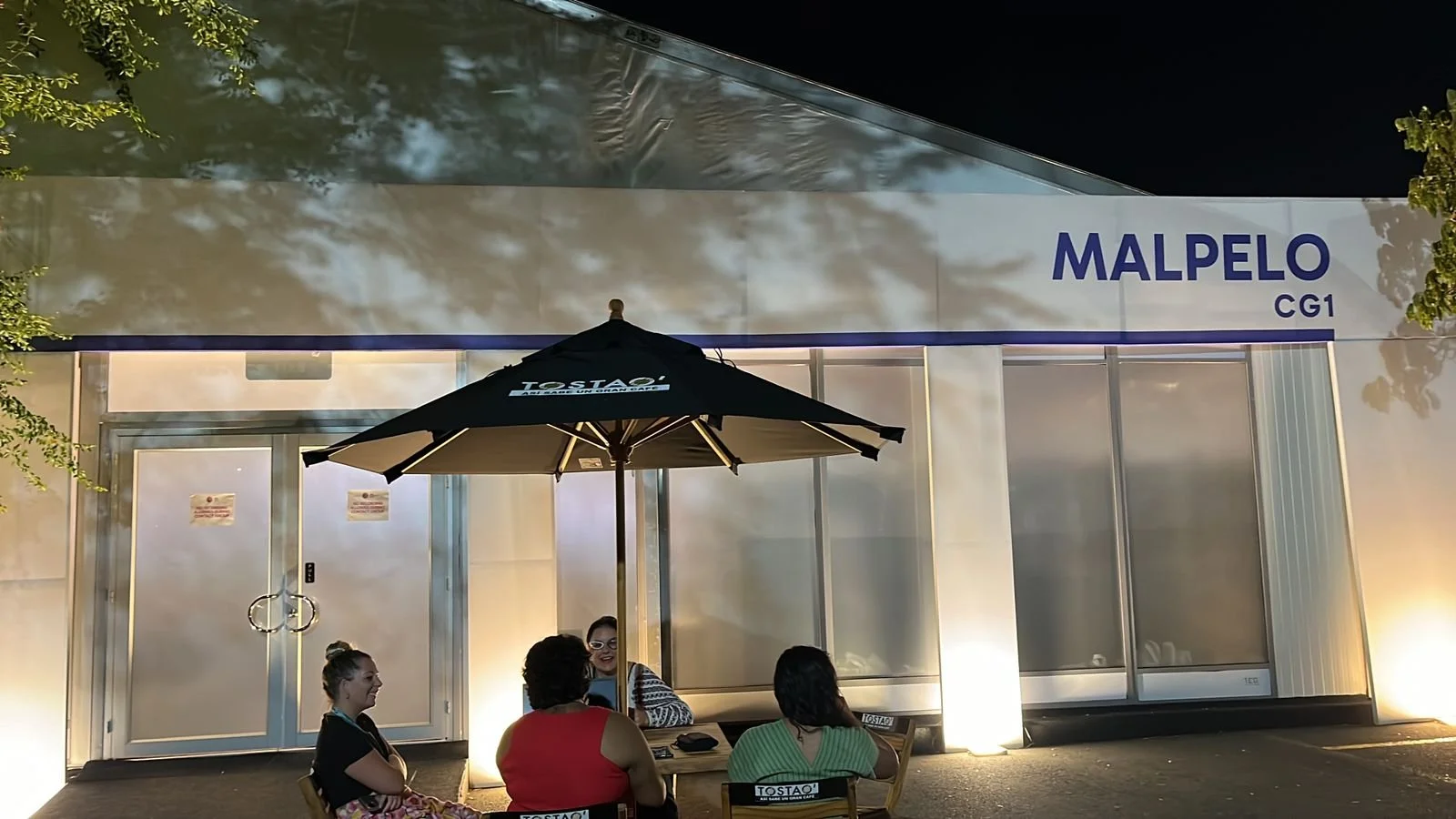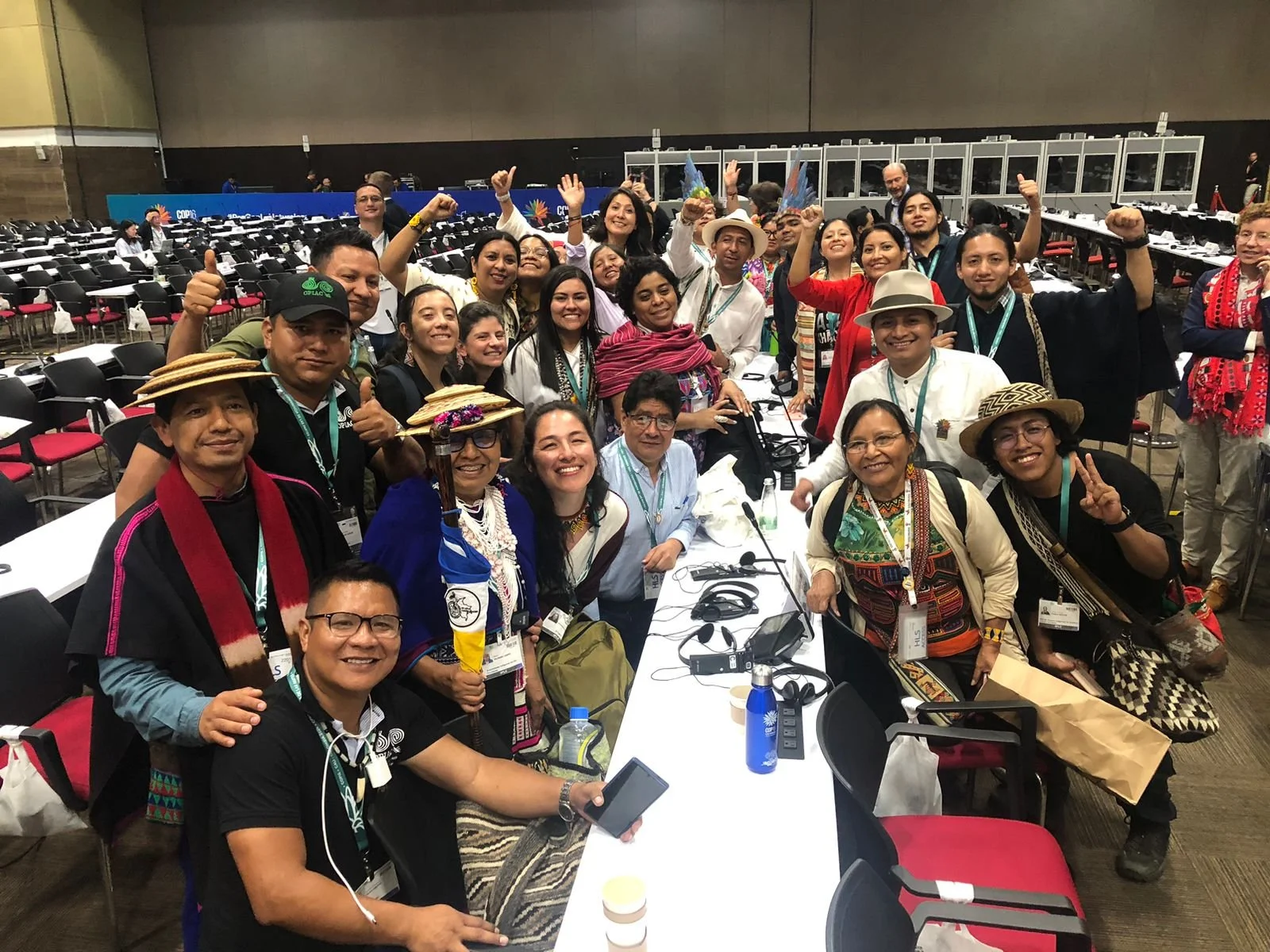Leading the Way: Images for Inclusion's Transformative Impact for Indigenous Peoples' Rights at COP16
Gustavo Petro, the President of Colombia, delivering a speech at the opening of the 16th meeting of the Conference of the Parties (COP16) to the Convention on Biological Diversity. Sunday October 20, 2024. Cali, Colombia.
The Conference of the Parties (COP) to the Convention on Biological Diversity (CBD) is an international treaty adopted at the Rio de Janeiro Earth Summit in 1992 and which entered into force in 1993. Its objective is the conservation of biological diversity, its sustainable use, and the fair and equitable sharing of the benefits arising from the utilization of genetic resources. This highly significant international Biodiversity event took place from October 21 to November 1, 2024. Our NGO, Images for Inclusion, participated actively in the Indigenous Peoples' Caucus every day at 8 AM, and very importantly, we were involved in the Contact Group on Article 8j until very late hours.
The head of our NGO also helped organize meetings with the delegations of Chile and Brazil, and spoke directly with the delegate from Chile and the delegate from Russia to request greater flexibility, commitment, and consensus in the negotiations for the inclusion of Indigenous Peoples' rights. In this way, we contributed our small part to the dialogue, ensuring that for the first time, a United Nations environmental agreement adopted and established a permanent Subsidiary Body for Indigenous Peoples and local communities on traditional knowledge.
At COP16, the work plan for Indigenous Peoples was decided. The conference also focused on strengthening the recognition of traditional knowledge, territorial rights, and direct access to essential funds for the exercise of self-determination.
While celebrating the establishment of this new permanent Subsidiary Body on Article 8(j) and other Provisions of the Convention as a significant step forward – expected to elevate issues related to the implementation of Article 8(j) and enhance the engagement and participation of Indigenous Peoples in all Convention processes – Images for Inclusion remains steadfast in its advocacy for a dedicated focus within this body, or a distinct mechanism, that specifically addresses the unique individual and collective rights and issues pertaining solely to Indigenous Peoples, separate from those of local communities.
This clear differentiation is vital because Indigenous Peoples hold a distinct legal status under international law, particularly recognized in the the ILO Convention 169, the American Declaration on the Rights of Indigenous Peoples, and the UN Declaration on the Rights of Indigenous Peoples (UNDRIP), which are the instruments that protect the rights of Indigenous Peoples, and constitute the minimum standard of protection for the dignity and survival of Indigenous Peoples. The also serve as frameworks for reconciliation, justice, and harmonious relations between Indigenous Peoples and States, therefore, States must implement them domestically. These include unique collective rights, such as self-determination, rights to their lands, territories, and resources, and the principle of Free, Prior, and Informed Consent (FPIC), which are not universally applicable to 'local communities' in general. Moreover, often, those who seek to hold power in these spaces use mechanisms to mislead, such as the lack of translation into Spanish, Indigenous languages or languages understood by all parties; also leaning on Documents like academic degrees and citizenship status, ignoring the wisdom and legitimacy of indigenous sciences.
Conflating these terms risks diluting the specific rights and protections intended for Indigenous Peoples. Their historical context of colonization, dispossession, and assimilation necessitates targeted recognition and remedies, which can be undermined if their unique claims are weakened by broader classifications. Maintaining this clarity is crucial to ensure that the distinct voice, rights, and self-identification of Indigenous Peoples are fully recognized, protected, and advanced without dilution.
In practical terms, mixing these terms can lead to misdirection of funds, where resources intended for Indigenous Peoples might be diverted. It can also result in compromised representation, as the distinct voice of Indigenous Peoples might be outvoted or diluted by other local interests that may not align with theirs. Ultimately, this creates challenges in accountability, making it harder to hold states accountable for specific commitments made to Indigenous Peoples.
Despite the challenges, this monumental moment, achieved through tireless efforts and dedicated advocacy, filled us with great emotion and joy. While there's still work ahead on financing and monitoring progress, it doesn't diminish the significance of this historic achievement. We invite you to continue reading and viewing the photos below to delve deeper into the events, the negotiations, and the tangible impact of our work at COP16. Great admiration goes to all the Indigenous women leaders who, over many years, fought to reach this moment. We thank IIFB @iifb_indigenous for their trust and for allowing us to learn and contribute to this historic process for Indigenous Peoples and Afro-descendant Peoples 🌎🌿💚
In the picture, Lidia Arriagada Garcia, president and CEO of Images for Inclusion. Our NGO supportedthe approval of the Subsidiary Body so that Indigenous Peoples had a real opportunity to advance their participation and representation process within the framework of their rights for the fulfillment of the CBD's objectives.
A final, truly emotional moment arrived on the evening of Friday, November 1, 2024, when the Subsidiary Body on Article 8j was officially adopted. This initiative will include Indigenous Peoples in future decision-making processes regarding nature conservation. This opened a path for the full and effective participation of Indigenous Peoples and local communities within the Convention on Biological Diversity and the implementation of the Kunming-Montreal Global Biodiversity Framework.
Lidia Arriagada Garcia, president and CEO of Images for Inclusion sharing this emotional moment when Indigenous Peoples were unequivocally recognized as vital guardians of the planet, holding invaluable knowledge and traditional practices essential for preserving Earth's biodiversity.
With Viviana Figueroa, from the Omaguaca Indigenous People in Argentina, and expert from the International Indigenous Forum on Biodiversity. She explained to AFP: the article "refers to countries, in accordance with their national legislation, establishing certain measures to protect, maintain, and preserve the knowledge, innovations, and practices of Indigenous and local communities, and also ensuring participation in the benefits from their utilization."
On Wednesday, October 30, 2024, Amidst the COP16 negotiations, a truly significant moment for Indigenous Peoples' rights unfolded. The discussions were taking a difficult turn, with some nations, including Indonesia, Russia, and the Republic of Congo, showing reluctance to support the establishment of a Subsidiary Body for Indigenous Peoples. Recognizing this challenge, IIFB leaders decided a silent demonstration was needed outside the negotiation room, having secured authorization.
At this critical juncture, the president of her organization, approached the IIFB leaders. She asked for permission to invite Brazil's Minister of Indigenous Peoples to join their authorized protest. Upon receiving their agreement, she personally conveyed an urgent request to a Brazilian delegate. The delegate responded immediately, and within minutes, the highly esteemed Minister of Indigenous Peoples of Brazil, Sônia Guajajara (@guajajarasonia), arrived to join the demonstration.
This carefully orchestrated, peaceful, and silent demonstration then saw the team swiftly position their advocates with placards at both exits of the Sierra Nevada room, clearly demanding action on Article 8(j).
Having photographed numerous Indigenous marches, Lidia understood the power of a visual statement. The almost immediate inclusion of Minister Guajajara was a game-changer. Her prominent presence, broadcast across news channels and newspapers that night, greatly amplified their focused advocacy, transforming it into a major media event. This specific action, spurred by the president's direct request and the IIFB's strategic decision, underscored the profound effectiveness of their silent protest, ensuring their call for a Subsidiary Body resonated globally.
The disputed points was Article 8J, which explored proposals for a permanent Subsidiary Body for Indigenous Peoples and local communities within the Convention on Biological Diversity (CBD). Having several countries against it such as the Democratic Republic of the Congo, Russia and Indonesia, we took action.
The president of our organization next to the Minister of Indigenous Peoples of Brazil, Sônia Guajajara. She generously responded to our call for solidarity with Indigenous Peoples from all regions of the world who were protesting with a peaceful and silent demonstration outside the Sierra Nevada hall in the Blue Zone at COP16 on Wednesday, October 30, 2024, in Cali, Colombia
196 countries were negotiating to reach agreements on ways to halt the destruction of biodiversity by 2030. The situation of these negotiations was critical. https://www.jornada.com.mx/noticia/2024/10/30/mundo/decenas-protestan-por-el-reconocimiento-de-los-indigenas-en-la-cop16-6431
The Indigenous Peoples' Caucus started every day at 8 AM.
A Long and Productive Week at COP16: Crisis and Commitment.
At COP16, the work plan for Indigenous Peoples was decided. The conference also focused on strengthening the recognition of traditional knowledge, territorial rights, and direct access to crucial funds for the exercise of self-determination.
As a Mapuche woman and president of our organization, Lidia Arriagada Garcia, participated daily in the Indigenous Peoples' Caucus meetings of @iifb_indigenous (from October 19 to November 1, 2024).
Lidia also attended every open negotiation meeting for 8j until very late hours, gaining an understanding of the process and its importance for the inclusion of Indigenous Peoples by recognizing their role in protecting biodiversity, as they are the guardians of the planet. Unfortunately, the negotiation spaces lacked Spanish translation, and many brothers and sisters were unable to understand.
For our organization, the promotion, protection, and defense of Indigenous Peoples' rights was fundamental. That's why we participated, facilitating meetings with delegations, among other activities, with the aim of improving the effective and full participation of Indigenous Peoples in all matters that affects them.
As part of the "Nature and Culture Summit," this was part of the visit to the Indigenous Reserve of La Delfina, where government representatives from around the world, along with more brothers and sisters from the International Indigenous Forum on Biodiversity (IIFB) and international organizations, as well as those from nearby territories, were invited. Sunday, October 27, 2024. Here, we had the honor of meeting authorities from the Council of Self-Government of the Regional Indigenous Organization of Valle del Cauca. We also met brothers and sisters from the Embera, Chami, Pasto, Nasa, Wounaán, and Yanakuna Peoples. Learn more about this on our Instagram: https://www.instagram.com/reel/DBuKrRARQ9x/?igsh=cDNlNHNzcXd4bXRm















